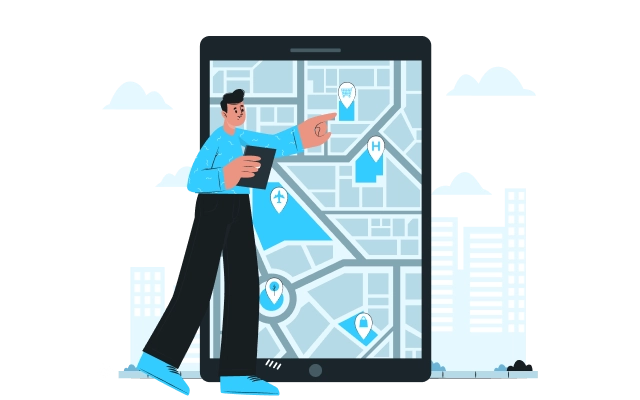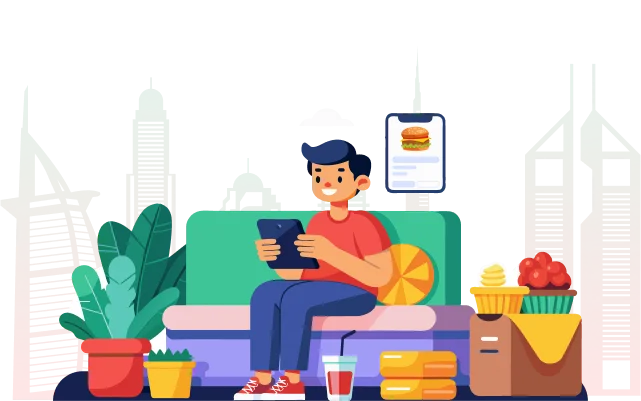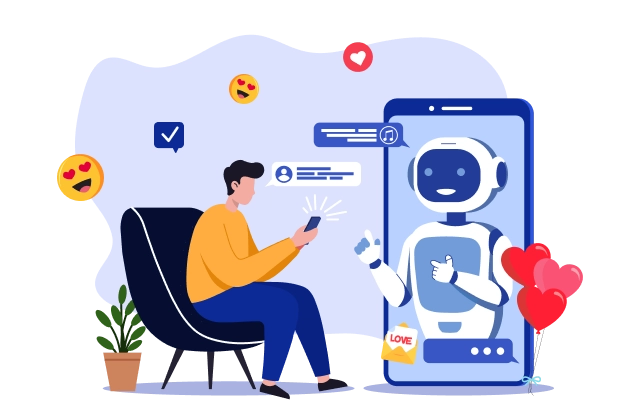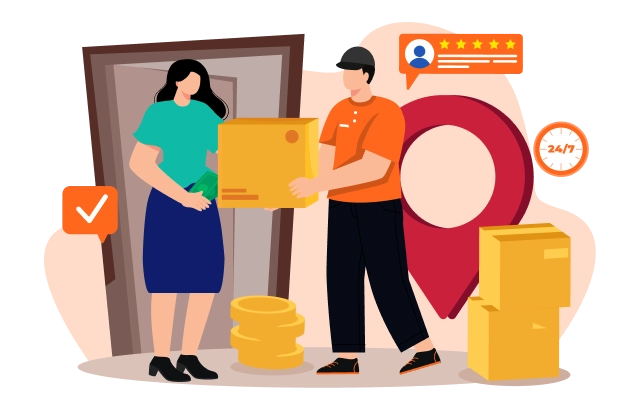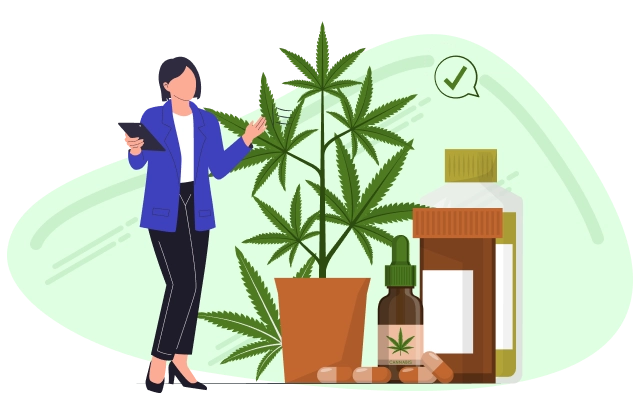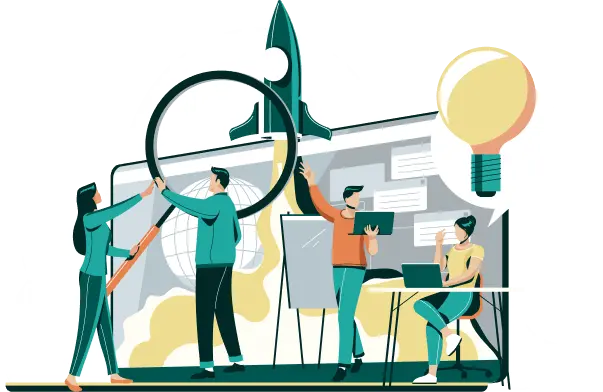If you've ever been trapped in traffic and unexpectedly diverted via a shortcut that saved you 20 minutes, there's a great possibility that you were using Waze. Based on the concept that drivers can guide one another away from jams and road dangers, Waze revolutionized navigation.
Launched in Israel in 2008 and acquired by Google in 2013 for over $1 billion, Waze didn't just map roads; it mapped driver behavior. What set Waze apart from its peers in the beginning was that it employed crowd-sourced information. Every user becomes a sensor, submitting real-time information on traffic jams, accidents, police setups, and road closures. This feature turned Waze into something more than a GPS application, but a social navigation system.
While the app is free for users, it’s backed by a clever and strategic monetization model. In this blog, we’ll dive deep into the Waze business model and explore exactly how this seemingly free app earns money, and what startups can learn from it.
What Makes Waze Unique?
All navigation apps help you travel from A to B. But where Waze shines is that it predicts what happens in between these routes. It uses real-time data from millions of drivers to simplify your trip, making it safer, faster.
The key to Waze is crowdsourcing. All users, consciously or unconsciously, add to the intelligence of the app. When your vehicle suddenly slows down, Waze presumes there is a slowdown or traffic. Moreover, if you flag a pothole, police patrol, or roadblock, that information is relayed to other users. That seamless cycle of input and output is what makes Waze superior to conventional navigation equipment.
Another thing that makes Waze unique is that it is gamified. Users are rewarded points for submitting information, providing warnings, or correcting maps—making driving a sort of community game.
Launch a Smart Navigation App with Ads Like Waze
Build your own location‑based app using our ready-to-deploy clone with hyperlocal ad support—pin ads, sponsorships, and search-driven monetization.
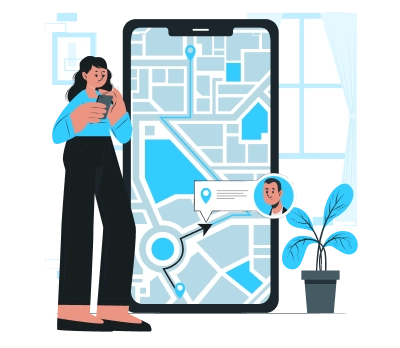
Target Audience & Market Positioning
Waze isn't for everybody. It's for a particular user: someone who drives frequently, or someone who would like to waste less time on the road, and the one who appreciates live updates.
We can say that everyday commuters, Uber and delivery drivers, and road-tripping travelers who are driving through unfamiliar areas are their target audience.
Google Maps might be your go-to for planning a weekend walk or finding a coffeehouse, but Waze is the app you open when you need to save 15 minutes off your drive around town. It does not confuse users with a variety of modes like cycling, walking, or public transport—its only function is for motorists, with motorists at the helm of development.
Geographically, Waze is most widely used in traffic-congested and highly penetrated markets: the US, Brazil, Indonesia, and certain corners of Europe and the Middle East. The fact that it is capable of providing hyper-local information, such as "a speed trap two blocks ahead," makes it a very strong competitor to wider navigation platforms.
Its positioning in the market also attracts gig workers. Several Uber, Lyft, and delivery drivers depend on Waze due to its swift rerouting, traffic evasion, and heads-up display features. Waze is not merely a utility; it's a helper of drivers, a co-pilot, and eyes on the road ahead.
Waze's Core Features Driving Growth
Waze didn't top more than 140 million monthly active users overnight. Its popularity is a result of high-impact features that are specifically designed for drivers.
Real-Time Navigation with Live Data
Waze is always updating your route according to live road conditions. It's not just smart GPS—it's real-time reactive routing based on real-world events.
Community Reporting
Users can report everything, like police sightings, traffic congestion, hazards, and even weather. These alerts are then sent to drivers around them, this makes the overall driving experience dynamic and responsive.
Smart ETA & Instant Rerouting
Waze can be trusted for the most accurate ETAs because it sources data from the crowd itself. If someone finds a route faster through the trip, Waze reroutes immediately.
Third-Party Integrations
The app gets along with others—Spotify, YouTube Music, Audible, and even voice assistants like Siri and Google Assistant are on board for easy use.
Waze Carpool (through 2022)
Prior to its shutdown, Waze Carpool enabled people to carpool and share fares. It wasn't quite a commercial operation like Uber but was more of a traffic-reducer.
Voice Navigation with a Twist
Waze lets users customize voice navigation, including recording their own directions or choosing from fun celebrity voices.
These features work together to keep users loyal and engaged. More importantly, they give Waze an incredibly rich data set—an asset that’s key to its monetization strategy, which we’ll explore next.
Waze Business Model Explained
The Waze business model is a freemium community platform that's financed with location-aware advertising. The app is completely free to use for users; no subscriptions, no paywalls, no premium versions are required. This enables Waze to scale very quickly while gathering huge volumes of location data from millions of active drivers.
So how does it make its money? Waze makes its money by utilizing one thing that it gathers in great supply: hyper-local driving habits. It uses this information to sell targeted, real-time advertisements to users on the go—without being distracting or annoying.
Google, being the owner of Waze, can allow it to stand alone. Waze aims at specialized navigation and community, whereas Google Maps deals with generalized use cases. Such independence enables Waze to try out various monetization models without impacting the core Google offering.
Waze Revenue Model: How Does Waze Make Money?
Waze makes money primarily through Waze Ads, its proprietary in-app advertising platform designed for local and national businesses. Here’s how it works:
Branded Pins
Imagine driving near a McDonald’s, and a pin with their logo pops up on your map. This is a “Branded Pin”—a visual ad that shows the store’s exact location. It's contextual, timely, and relevant.
Promoted Search
When people search for something—e.g., "coffee" or "gas"—sponsored listings appear top of page. They function similar to Google Ads, allowing companies to be found when drivers are deciding where to go.
Zero-Speed Takeovers
This is Waze's most advanced format. When your car is stopped dead (e.g., at a red light or traffic stop), a banner ad shows up. Since the vehicle isn't in motion, it doesn't create distraction issues and gains full attention.
Business Partnerships
Waze collaborates with large chains such as Dunkin', Shell, Walmart, and more for frequent location-based campaigns. Waze is utilized by these brands to generate in-store traffic with measurable results.
Waze for Broadcasters & Cities
Waze additionally provides real-time traffic and incident information to city governments and broadcasters (for traffic updates). While largely free under data-sharing initiatives, such arrangements can indirectly generate value and brand equity.
Together, these monetization streams create a powerful advertising platform. For advertisers, it's high-conversion and geo-targeted awareness. On the other hand, for Waze, it's sustainable scale revenue.
Advertising Strategy: Local Ads on the Move
Waze does not do typical mobile advertising. No pop-ups. No auto-play videos. Rather, it excels at location-based micro-moments that correspond to what drivers need in the moment. This makes them extremely relevant and high-converting.
Unlike other advertising platforms, Waze emphasizes intent-based interactions. If a user is about to eat lunch and looking for "pizza," a nearby local Domino's branded pin is helpful, not interruptive. The ad is native, visually placed on the map, and only appears when it is safe to do so—usually while stopped.
Waze Ads are also cost-effective for small companies. Local convenience stores, gas stations, and cafes can establish inexpensive campaigns to appeal to local drivers. Waze's "Starter" and "Plus" ad levels make it affordable for businesses of all sizes.
And since all is connected to real-world movement, performance monitoring is extremely precise. Companies can view how many users viewed an ad, clicked on it, and how many visited their store (gracias to Google ecosystem data).
Waze vs. Google Maps vs. Uber/Lyft
| Feature | Waze | Google Maps | Uber / Lyft |
|---|---|---|---|
| Purpose | Real-time driving navigation | General navigation | Ridesharing |
| Monetization | Location-based ads | Google Ads & data | Ride fees, commissions |
| Community data input | Yes (crowdsourced) | Minimal | No |
| Mode of use | Driver-centric | Multi-modal (walk, drive) | Passenger-centric |
| Key differentiator | Real-time updates from users | Integration with Google | Ride-booking service |
Waze is more of a navigation tool for motorists, while Uber and Lyft are logistics services based upon the same mapping technologies. Indeed, some Uber drivers use Waze due to its superior rerouting and traffic evasion.
An Uber clone or a Waze-like app would have to both borrow navigation logic and real-time data-sharing to even come near Waze's value proposition. Its devoted driver base is what makes Waze untouchable in terms of traffic prediction accuracy and user satisfaction.
What is even more special about Waze is that it's not making money from user rides, maps, or subscriptions but rather converting driving time into ad space—a subtle yet potent change in the revenue model of mobile apps.
Data Collection and Privacy at Waze
Waze, like all freemium apps, gathers a lot of user data—but with an emphasis on utility and anonymity, not spying. Its information encompasses real-time driving speed and location, user reports, traffic accidents and incidents, and even user-uploaded photos of road hazards.
The information drives Waze's essential functions:
- Traffic congestion warnings
- Accident/roadwork detection
- Route optimization
- Ad targeting by location & drive time
Notably, Waze collects and anonymizes this data. It doesn't connect ad behavior and traffic information with real identities. Nevertheless, location-based applications always create privacy issues, particularly since they capture live GPS signals. That's why Waze provides users with great control over sharing locations, reporting incidents, and even ad targeting.
As a Google subsidiary, Waze definitely follows Google’s privacy policies. These policies are regularly audited and publicly documented.
What Startups Can Learn from Waze's Business Model?
If you’re planning to build a Waze-like app or looking to create an Uber clone with map-based features, there’s a lot to learn from Waze’s approach:
1. Build Community First, Monetize Later
Waze didn’t rush into monetization. It focused on creating a loyal user base that crowdsources accurate traffic data. This created network makes more users join, and creates better data, attracting even more users.
Lesson: Prioritize value creation over revenue generation.
2. Micro-Monetization Works
Waze didn't get paid. It instead used the users' activity to build a valuable product—location-based ad inventory. This helps keep the app free, low-friction, and in use, while still profitable.
Lesson: Monetize attention in small, unobtrusive ways.
3. Use Data Ethically but Smartly
Waze makes real-time data into individualized experiences while maintaining respect for privacy. It doesn't sell data about its users—it sells a connection to moments (such as a driver passing near a business).
Lesson: Data is gold, but trust is platinum. Be transparent and user-first.
4. Make Ads Native and Contextual
Waze ads never disrupt. Branded pins or zero-speed banners are fully integrated with the navigation experience.
Lesson: Ads should not disrupt user flow—they must augment it.
With smart UX, ethical use of data, and hyperlocal monetization, Waze provides a model for location-based apps across industries—courier delivery, eCommerce, food delivery, or taxi apps.
FAQs On Waze's Business and Revenue Model
1. How does Waze generate money if the app is free?
Waze earns revenue from Waze Ads, including branded pins, promoted search, and takeover ads displayed when the vehicle is stationary. Companies pay to be noticed by motorists in the vicinity.
2. Is Waze profitable?
Google doesn't break out precise revenue, but Waze has been steadily profitable ever since it introduced its ad program. It's listed as one of Google's key location-based advertising contributors.
3. Can small businesses advertise on Waze?
Yes, Waze provides ad packages for small companies, too, at very reasonable prices. It has a self-serve tool that makes it easy to make campaigns for local shops, gas stations, and cafes.
4. Why is Waze different from Google Maps?
Waze is more concentrated on real-time feedback from drivers, faster rerouting, and evading traffic. Google Maps is a more universal application that can assist you in walking, public transport, and indoor mapping.
5. Can I develop a Waze-like app for my startup?
Yes, but it can be a bit challenging for obvious reasons. You’ll need strong real-time mapping tech, a user community to feed data, and a unique monetization model. Many entrepreneurs opt for Uber clones or white-label Waze alternatives to save time.
Get Your Own White-Label Waze Alternative
Build your own traffic app that earns while users drive. Our clone is ready with customizable tools for developers, startups, and businesses.
Final Thoughts
Waze's business model is proof of strategic elegance. At a time when everyone is so besotted with subscriptions and upselling, Waze demonstrates how you can create a hit product by keeping it free, helpful, and community-based.
Its revenue model is not user-dependent but business-dependent—businesses that need to reach them without intruding on the user experience. With contextual ads and branded pins, Waze commercializes drive-time without crossing the annoyance threshold.
As location-based commerce increases—particularly for gas, EV charging, coffee, and convenience retailing—Waze is well situated. Its ad platform combines hyperlocal reach with high intent, a combination that doesn't come often.
To startups creating navigation, delivery, or ride-hailing apps, Waze's tale is full of lessons:
- Solve actual problems first
- Utilize user-provided data to enhance quality
- Monetize attention, not access
- Remain lean and centered on core value
In 2025 and beyond, Waze is still more than just a navigation app—it's a proof-of-concept for the potential of crowdsourced, utility-first platforms that quietly win hearts (and ad dollars).


